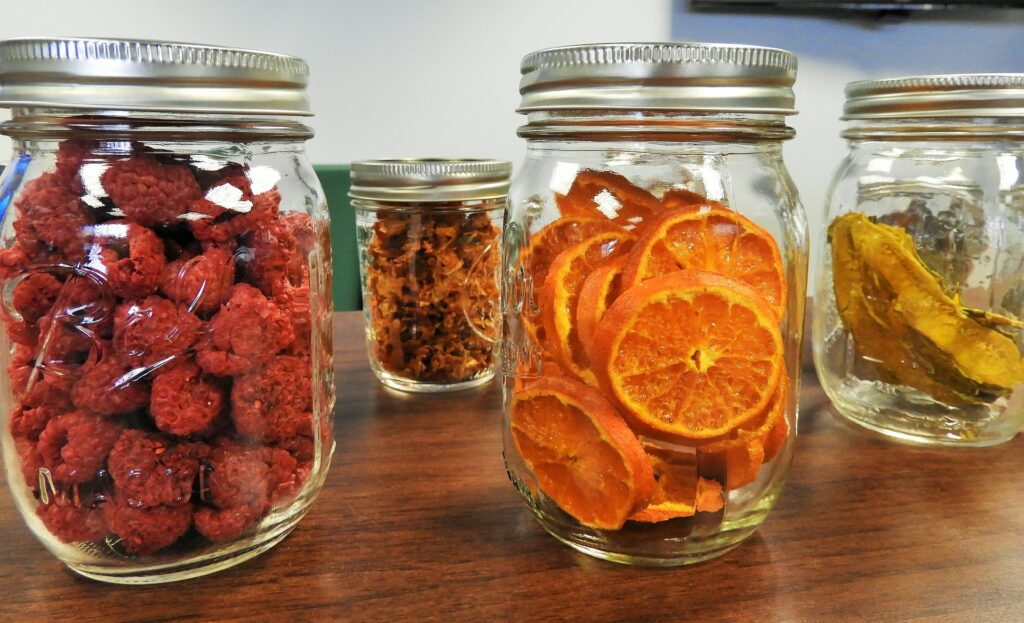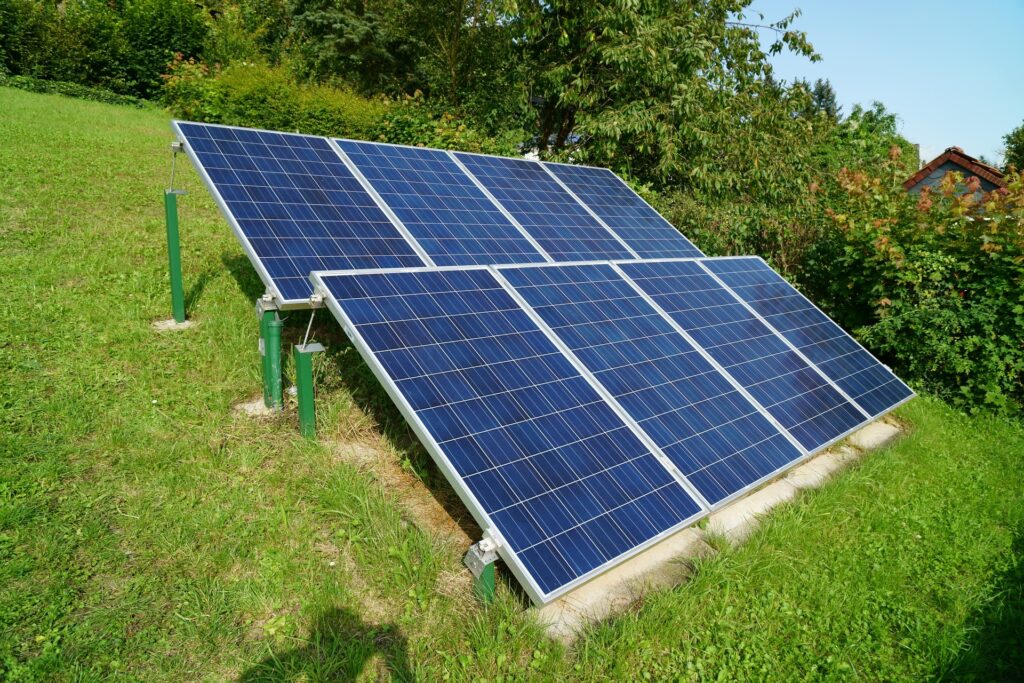
Introduction to Prepping: Understanding the Basics
Prepping, short for preparedness, is the act of being ready for any unforeseen circumstances that may arise. It involves taking proactive measures to ensure that you and your loved ones are equipped with the necessary resources to survive in times of crisis.
Prepping can range from simple steps such as storing extra food and water to more complex measures like learning survival skills and creating a bug-out bag. The key to successful prepping is to be well-informed, organized, and adaptable. By understanding the basics of prepping, you can take the necessary steps to protect yourself and your family in any situation.
Prepping is a lifestyle that prepares you for an uncertain future. It involves stockpiling supplies, learning survival skills, and practicing self-sufficiency. Being prepared for any emergency is always a good idea.
Some preppers believe that society is on the brink of collapse and that being prepared is the best way to survive. While prepping is often associated with doomsday preppers, the reality is that anyone can benefit from the lifestyle.
The simple fact is that things happen, such as hurricanes, tornadoes, earthquakes, floods, etc. But beyond weather and natural disasters, the power grid can do down, war could break out, and another pandemic could happen. Any of these or other things could make it impossible to get food, medicine, and power to be able to survive.
It’s Important to be Prepared
Prepping is not just about hoarding supplies and building bunkers. It’s about being self-reliant and having the ability to adapt to any situation. This means learning how to grow your own food, purify water, and provide medical care in the absence of modern amenities. It also means having a plan in place for evacuation or sheltering in place, depending on the circumstances.
Prepping requires discipline, patience, and a willingness to learn new skills. It’s not something that can be done overnight, but rather a gradual process of building up resources and knowledge over time.
While some may view prepping as extreme or unnecessary, the reality is that emergencies can happen at any time and being prepared can mean the difference between life and death. By understanding the basics of prepping and taking proactive measures to protect yourself and your loved ones, you can have peace of mind knowing that you are ready for whatever comes your way.
Assessing Your Personal Needs: Tailoring Your Prepping Plan
Assessing your personal needs is an essential step in tailoring your prepping plan. It involves identifying potential risks and vulnerabilities specific to your location, lifestyle, and health conditions.
For instance, if you live in an area prone to hurricanes, you may need to focus on securing your home and stockpiling supplies that can withstand high winds and flooding. If you have a chronic medical condition, you may need to ensure that you have a sufficient supply of medication and medical equipment.
Tailoring your prepping plan also means considering the needs of your family members or dependents. This includes children, elderly relatives, and pets. You may need to make special arrangements for their care and safety in times of crisis.
By assessing your personal needs and tailoring your prepping plan accordingly, you can ensure that you are well-prepared for any emergency situation that may arise. Remember, being prepared is not just about surviving but thriving in the face of adversity.
Building Your Prepping Supplies: What to Consider
Building your prepping supplies is a crucial aspect of being prepared for any emergency. However, it’s important to consider several factors when selecting the items to include in your stockpile.
You should prioritize the essentials such as food, water, and shelter. These are the basic necessities that will keep you alive in times of crisis. It’s recommended to have at least three days’ worth of supplies on hand, but ideally, you should aim for at least a two-week supply. Once you have at least a two-week supply, then you can start aiming for a six-month supply, then a one-year supply, and so forth.
Consider the climate and terrain of your location. For example, if you live in a cold climate, you’ll need warm clothing and blankets to stay warm. If you live in an area prone to wildfires, you’ll need fire-resistant materials and tools to protect your property.
Think about your personal needs and preferences. This includes any dietary restrictions or allergies, as well as any medications or medical equipment that you may require. You should also consider comfort items such as books or games to help pass the time during an extended emergency situation.
By carefully considering these factors and building a well-rounded prepping supply kit, you can ensure that you are ready for any situation that may arise. Remember, being prepared is not just about surviving but thriving in the face of adversity.
One note to remember: Be sure that any medicines and foods you stockpile have long use dates. Check dates as you go, rotating the newer to the back and the older to the front to be used first. Most medicines will be okay after their use date, although they might lose a bit of their potency. Foods that have a best-by date will be okay after that date. But foods that have an expiration date will not be good after that date.

Solar Power Will Take Care of Your Needs When the Power Goes Down
When it comes to prepping, having a reliable source of power is essential. In times of crisis, electricity may be unavailable for days or even weeks, possibly much longer. This is where solar power comes in handy. By harnessing the power of the sun, you can generate electricity without relying on the grid.
Solar panels and solar generators are becoming more affordable and accessible, making them a popular choice for preppers. Portable solar panels are easy to use and require minimal maintenance. With a solar-powered generator or battery bank, you can keep your essential devices charged and running during an emergency.
In addition to being practical, solar power is also environmentally friendly. It’s a renewable energy source that doesn’t produce harmful emissions or pollutants.
There are a variety of solar generators available, depending on your needs, how much power you want, how long you want the solar generator to last per charge, etc. Solar panels are portable and easy to set up to charge, plus quick to charge.
Investing in a solar generator (or more than one) will allow you to not only keep your cell phones charged, but you can run fans, air conditioners, refrigerators, freezers, microwaves, etc. If you have more than one solar generator power bank and more than one set of solar panels, you can charge multiple solar power banks at the same time. Plus you can be using one solar generator while another is charging up.

Building a 72-Hour Emergency Kit: Essentials for Short-Term Survival
Building a 72-hour emergency kit is an essential step in prepping for short-term survival. This kit should contain the bare essentials needed to survive for at least three days. It should be portable and easy to carry in case you need to evacuate quickly.
The kit should include items such as non-perishable food, water, a first aid kit, a flashlight, and extra batteries. You should also include a whistle, a multi-purpose tool, and a map of your area. If it’s summer, be sure to have enough water on hand.
Consider any special needs you or your family members may have, such as medications or baby supplies. Don’t forget to include important documents such as identification and insurance papers. It’s also a good idea to have at least two changes of clothing.
By building a 72-hour emergency kit, you can have peace of mind knowing that you are prepared for short-term survival in case of an emergency. Don’t wait until an emergency is upon you to be ready.

Water Storage and Purification: Hydration Strategies for Preppers
Water storage and purification are crucial aspects of prepping for any emergency. It’s recommended to have at least one gallon of water per person per day for drinking and sanitation purposes. This means that a family of four should have at least 12 gallons of water stored for a three-day emergency kit.
However, storing large amounts of water can be challenging, especially if you live in an apartment or have limited space. In this case, consider investing in a water filtration system or portable water purification tablets. These can help ensure that any water source, such as a river or lake, is safe to drink.
It’s also important to regularly rotate your water supply and check for leaks or contamination. By prioritizing water storage and purification, you can ensure that you and your loved ones stay hydrated and healthy during an emergency.
Food Storage for Beginners: Long-Term Shelf Stability and Nutrition
Food storage is another crucial aspect of prepping for any emergency. When building your prepping supplies, it’s important to consider long-term shelf stability and nutrition. This means choosing foods that have a long shelf life and provide essential nutrients.
Some examples of long-lasting foods include canned goods, dried fruits, dried vegetables, and grains such as rice and quinoa. It’s also important to consider the nutritional value of the foods you choose. Aim for a balance of protein, carbohydrates, and healthy fats to ensure that you are getting the nutrients your body needs.
One idea for ready-made food storage that has a long-term shelf life is to purchase containers of freeze-dried foods. There are all sorts of freeze-dried foods with a long shelf life that you can purchase and store such as butter, peanut butter, fruits, vegetables, meats, grains, and even desserts.
Consider learning to can and investing in a food dehydrator or vacuum sealer to extend the shelf life of fresh foods. Prioritizing food storage and nutrition in your prepping plan so you can ensure that you and your family have access to healthy nourishing meals during an emergency.
First Aid and Medical Supplies: Preparing for Health Emergencies
First aid and medical supplies are essential components of any emergency preparedness plan. In the event of an emergency, access to medical care may be limited or unavailable, making it crucial to have the necessary supplies on hand.
Your first aid kit should include items such as bandages of various sizes, gauze pads, antiseptic wipes, and pain relievers. It’s a good idea to have a few packs of Stop Bleed also. It’s important to have a supply of any prescription medications you or your family members may need.
Consider taking a first aid course to learn basic life-saving skills such as CPR and how to treat wounds and injuries. Be sure to regularly check your first aid kit for expired items and replace them as needed. Rotate any meds so you use the older first and have the newest in your emergency first aid kit.

Communication and Information: Staying Connected in Times of Crisis
In times of crisis, communication and access to information can be a matter of life and death. It’s important to have a plan in place for staying connected with loved ones and receiving updates on the situation.
Consider investing in a hand-crank or solar-powered radio to stay informed about any emergency broadcasts or news updates. Have a backup power source for your phone, such as a portable charger or solar-powered battery pack.
It’s also important to have a designated meeting place and communication plan with family members in case you are separated during an emergency. This could include setting up a group chat or using walkie-talkies to stay in touch.
Home and Personal Security: Protecting Your Family and Assets
Home and personal security are crucial aspects of emergency preparedness. In times of crisis, it’s important to protect your family and assets from potential threats.
The cold hard fact is that when times get hard or times get bad, the worst comes out in some people. Perhaps it’s because they get desperate. They see what you have as theirs, and they might do anything to take it.
This is why it’s important to be prepared when it comes to security and protecting yourself, your family, and what’s yours.
Consider investing in a home security system that includes cameras, motion sensors, and alarms. This can help deter potential intruders and provide peace of mind knowing that your home is being monitored.
It’s also important to have a plan in place for securing your property during an emergency. This could include boarding up windows or reinforcing doors to prevent damage from high winds or flooding.
Consider investing in personal protection items such as pepper spray or a self-defense tool. It’s important to be prepared for any situation and prioritize the safety of yourself and your loved ones.
Skills and Training: Essential Knowledge for Self-Sufficiency
Skills and training are essential components of emergency preparedness. In times of crisis, it’s important to have the knowledge and abilities to be self-sufficient.
Consider learning basic survival skills such as starting a fire, building a shelter, and finding sources of food and water in the wild. Knowing how to navigate using a map and compass can also be invaluable in an emergency.
Investing in training for medical emergencies such as CPR or wilderness first aid can also be life-saving. Learning how to grow your own food or preserve it through canning or dehydrating can provide long-term sustainability.
Having a diverse set of skills and knowledge can increase your chances of survival and make you a valuable asset.
Maintaining Your Preps: Regularly Updating and Rotating Your Prepper Supplies
Maintaining your preps is just as important as preparing them in the first place. Regularly updating and rotating your prepper supplies can ensure that they are always ready for use in an emergency.
Check expiration dates on food, water, and medication and replace them as needed. Inspect your first aid kit and make sure it is fully stocked with all necessary items. Don’t wait to stock what you need. Get the necessities and plenty of them. Extras that aren’t necessary can come later.
Test your backup power sources and communication devices to ensure they are functioning properly. Consider adding new skills or training to your repertoire to increase your preparedness level.
By regularly maintaining your preps, you can have peace of mind knowing that you are always ready for whatever may come your way.

